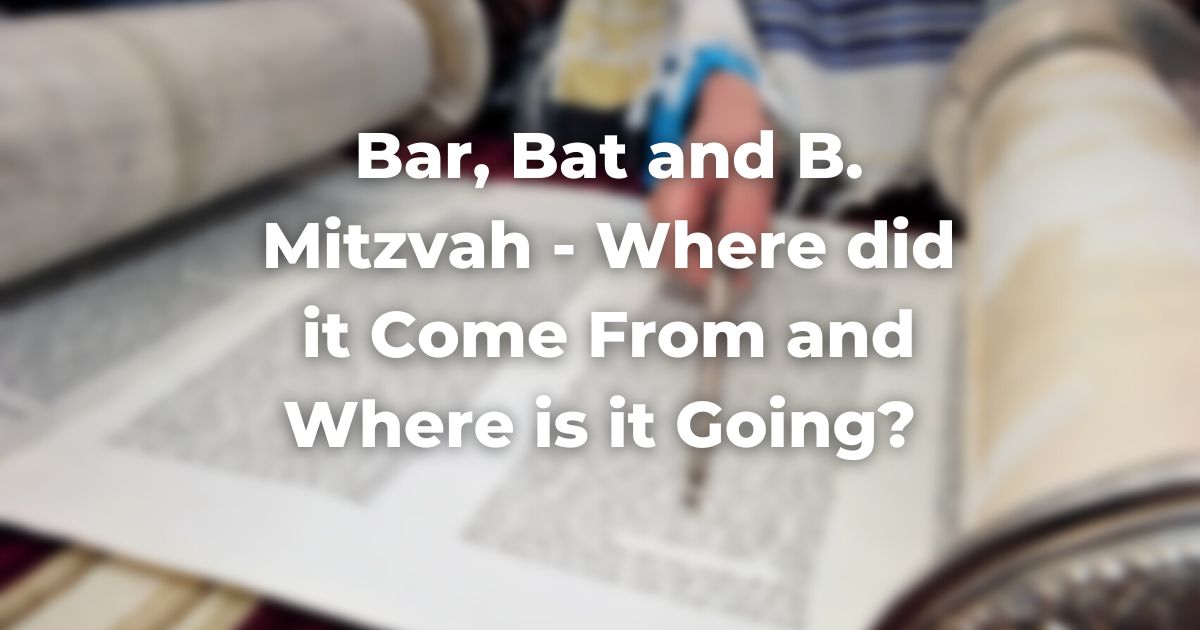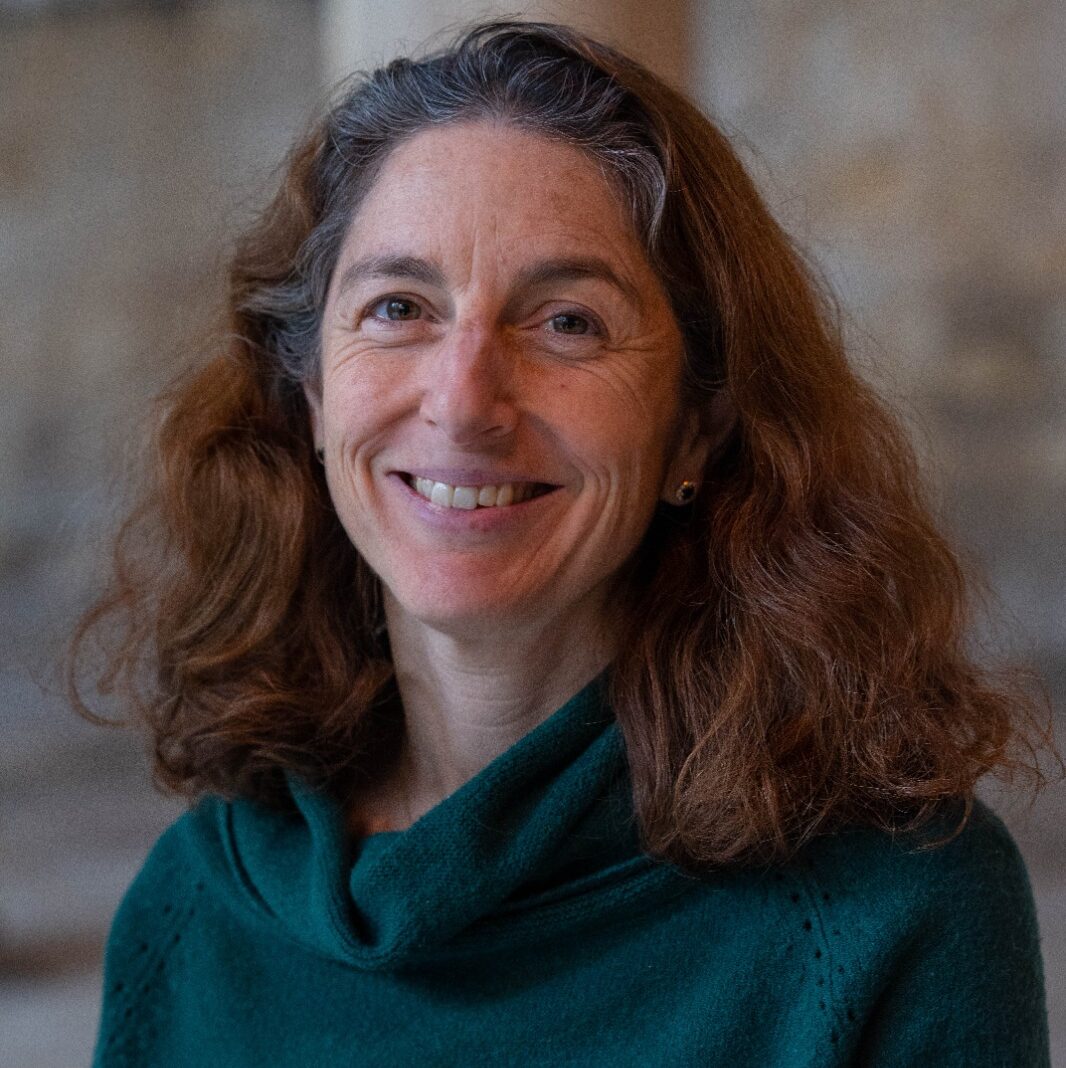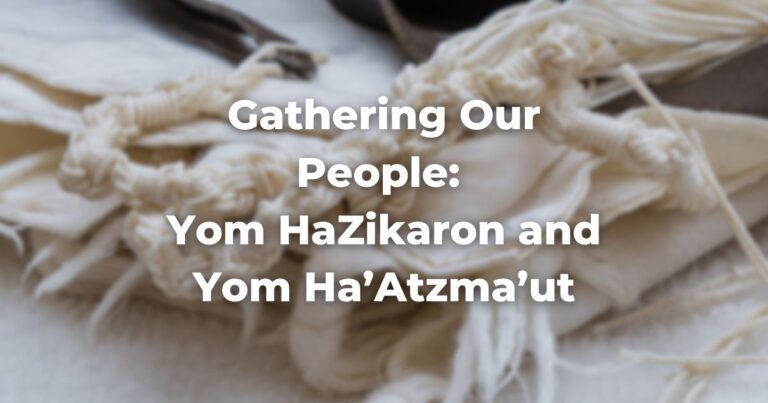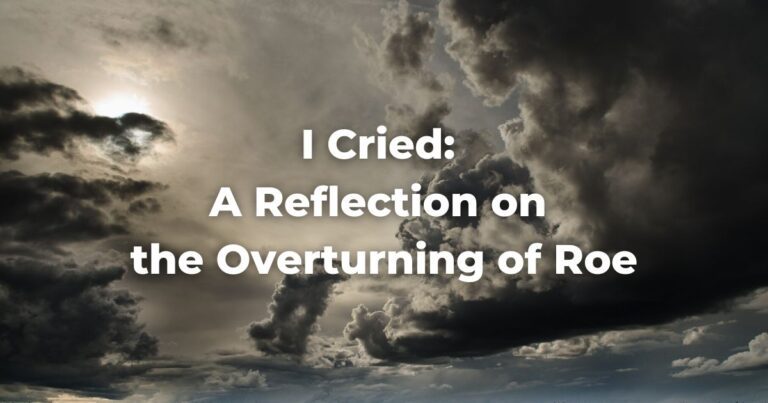The B’nei Mitzvah moment is one of today’s best known Jewish milestones, marking coming of age as a Jewish “adult” and responsibility for one’s own actions.
Bar, bat or b. mitzvah refers to a person, but many people use it to refer to the ceremony. It means son/ daughter/person of the commandments or one who is now responsible to observe TorahRefers to the first five books of the Hebrew Bible, the Tanakh, also called the Five Books of Moses, Pentateuch or the Hebrew equivalent, Humash. This is also called the Written Torah. The term may also refer to teachings that expound on Jewish tradition. Read more and rabbinic law.
It usually features a combination of study, leading part of a prayer service or study, and a festive meal or other celebration.
Many people now use the phrase simply say B-Mitzvah or Brit Mitzvah to be thoughtful about gender neutrality.
A recent paper of the Conservative Law Committee (CJLS) on non-binary Torah honors goes into further detail.
From a Jewish tradition standpoint, B’nei (plural) mitzvah may begin wearing tallit and/or tefillin, count in a minyan, or be given the honor of an aliyah (saying the Torah blessings).
However, this rite of passage also provides opportunities to take on other mitzvot (commandments) and responsibilities related to volunteer projects close to a young person’s heart.
Bar mitzvah ceremonies only began in the Middle Ages and bat mitzvah in the 1900s. Today the various streams have their own approaches, but each family can make choices among a variety of options to mark this transition into Jewish “adulthood.”
How did the tradition evolve and what are some new ways to make this a meaningful journey?
What’s age got to do with it?
While twenty was the Biblical age of majority for army service, taxes etc. (Numbers 1:3), there is no mention of bar mitzvah.
In the Mishna, (compiled @200 C.E.) “Judah ben Tema… used to say: At five years of age the study of Scripture; at ten the study of MishnahA collection of rabbinic teachings edited in Israel around 225 CE. Organized in six sedaraim by subject matter and dealing with both ritual and civil law. Both the Jerusalem and Babylonian Talmud are expansive discussions of the Mishnah. Read more; at thirteen subject to the commandments…” (Pirkei Avot 5:21).
Although Mishna Niddah specifies the age at which youths are responsible for their own actions and vows – 12 for a girl, 13 for a boy, plus signs of puberty – during the talmudic (200-500) and early medieval times (500-1050), youths simply began to participate in religious observances as soon as they were considered mentally fit.
Let the party begin!
During the later Middle Ages (1300-1500) in Ashkenaz (Northern Europe), youth had to wait until 13 to be called to the Torah or wear tefillin, so the age of majority regained significance, marking full participation in the community.
In thirteenth-century France, a father said a blessing that he was no longer responsible for his thirteen-year-old son’s actions, ushering in the first official bar mitzvah ceremony.
Gradually other elements were added: reading Torah (maftir), Prophets (haftarah), giving a speech/drasha and having a festive meal, usually on the Shabbat after the 13th birthday.
The Lifetime of a Jew Throughout the Ages of Jewish History describes festive celebrations in Morocco.
Bat mitzvah: Paving the Way
Jewish communities in Italy, France, and the Ottoman Empire began developing rituals for girls in the 19th century with flowers, festive clothing and blessings, as a group or individually.
Judith Kaplan, the oldest daughter of Rabbi Mordecai Kaplan, became the first American to celebrate a Bat Mitzvah in 1922 at a Shabbat evening service.
Girls can celebrate at age 12 following Mishna Niddah (above), probably because girls tend to mature earlier than boys, both physically and emotionally. Some schools (congregational or Jewish day school) teach a whole grade together, so kids all end up marking this milestone at age 13.
Reform Judaism preferred the confirmation ceremony at age 15, but eventually bar/bat mitzvah became mainstream, though often on Friday nights, not during the Shabbat morning service.
Bat mitzvah gained stature in the Conservative Movement in the 1970s with participation in Shabbat morning services. Girls began to lead prayers and chant Torah/ haftarah, and older women eagerly became adult b’not mitzvah.
Orthodoxy followed closely behind, starting slowly in the 1930’s with Friday night services; it now focuses on women’s prayer groups, Torah learning or teaching.
Intended as a one-time chance to participate, bat mitzvah opened the door for women of all ages seeking to lead services at any time of year (Jewish Women’s Archive).
Modern times
Today a B-Mitzvah can choose to participate and show their commitment to Judaism in many ways. Most people recite the Torah blessings (“have an aliyah”). Many also read parts of the Torah in the special cantillation/trope, chant the haftarah, lead some prayers and speak about the Torah portion.
Most liberal communities offer the same opportunities to all teens regardless of their gender.
A B-Mitzvah may twin with a child in another country or someone who was not able to have a B-Mitzvah (via Yad Vashem project).
Adults at the age of 82 or 83 now celebrate a second (or sometimes first) b. mitzvah, as Psalm 90, verse 10 says a typical life is 70 years, so the age of 82/ 83 – marks a second B-Mitzvah moment.
Beyond the service
In my work with teens who come to Israel for their B-Mitzvah, I often suggest additional ways to mark the year of learning. I want them to get excited about lifelong Jewish learning, not see it as something meant just for kids. I also want the ritual to be connected to their daily lives, not a one-time experience.
Here are some ideas I’ve found valuable for teens and the mitzvot they embody:
- Getting your first job / Growing vegetables – “to work the land and care for it”
- Doing a family roots interview, film, booklet or powerpoint – “rise before the elderly”
- Volunteering – “care for the poor, the widow, the orphan…”
- Getting to know a Jewish community abroad / pen pal – “all Israel are guarantors for one another”
- Connecting with Israel: learning, films, a visit, iCenter resources “and you shall inherit the land…”
- Taking on one new mitzvah -“learning is great, for it leads to action”
- Completing a first aid course – “and you shall live by them”
- Meeting with a refugee or recent immigrant – “for you were strangers in the land of Egypt”
- Experiencing Shabbat in new ways- “for on the seventh day God rested from all the work God had done”
- Making your own ritual objects- “hiddur mitzvah – beautifying the rituals”
- Rediscovering hallah, candles, mikveh – “women’s mitzvot:”
Further reading for kids and parents:
- It’s a Mitzvah by Berhman House
- Bar Mitzvah, a History by Michael Hilton
- Putting God on the Guest List by Jeffrey Salkin
- Source sheet and More detailed source sheet on Bar Mitzvah
Author
-

Rabbi Berkowitz lives in Jerusalem where she performs bat and bar mitzvah ceremonies and weddings for people from all over the world. The author of Taking the Plunge: A Practical and Spiritual Guide to the Mikveh and many articles, she has taught Judaism and Spiritual Care at a variety of seminaries and colleges in Israel and online. Miriam is one of Israel’s first certified hospital chaplains and co-founded Kashouvot: Center for Spiritual Care to introduce chaplaincy to Israel. She also creates hand-made ceramic Judaica and is completing the Israeli tour guide course. www.ravmiriam.com
View all posts






